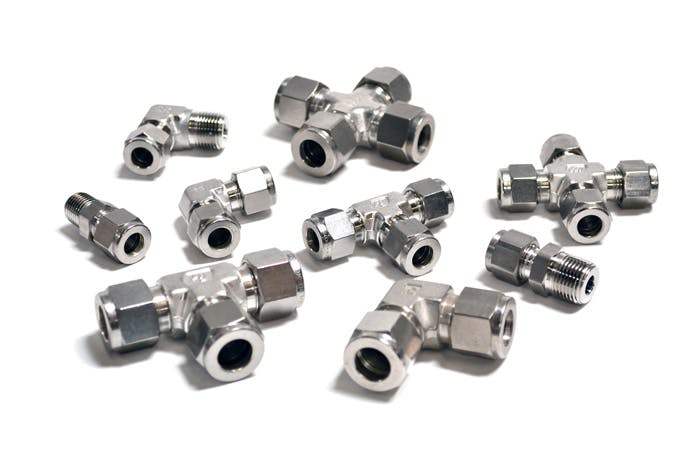When to use Stainless Steel Hose Fittings and Adapters?

Image Description: Stainless hose fittings and adapters
Stainless steel is one of the wonder materials which exhibits its utility in the form of its ubiquity. It has found a place in many industries as a versatile material that can be tailored to perform specific functions, such as in the construction of machinery and equipment. Stainless steel hose fittings and adapters are just two examples of parts being manufactured for industrial equipment. Though they can also be manufactured using brass, aluminum, and plastics, using stainless steel is beneficial in a number of cases.
Here, we take a closer look at situations that require stainless steel hose fittings and adapters while shedding light on the advantages of stainless steel.
When Durability is Required
Hose assemblies in hydraulic systems have to endure various pressures and temperatures when in use. Cyclical changes in temperature and pressure expand and contract parts. As a result, selecting unsuitable materials for hose fittings and adapters will degrade your system over time. Ultimately this can lead to the collapse of the whole hydraulic system.
Hose fittings and adapters made from various grades of stainless steel are less likely to exhibit micro-cracks. This makes them a more durable choice for the task at hand and improves the longevity of the hydraulic system.
In Corrosive Environments

Stainless steel grades, particularly 316, are much more suited to the job in corrosive environments. A higher concentration of chromium in their composition enables them to form a protective barrier against chloride salts. Plus, their strength adds to their list of advantages. No other material provides such benefits compared to their cost.
When Sterility is Necessary
The food, beverage, and pharmaceutical industries have to comply with strict regulations for ensuring sterility. Failure to comply with these standards may result in lawsuits, penalties, and bad press. As a result, industrial standards have been formulated over the years that outline the necessary equipment required for sterile product handling.
Stainless steel is resistant to many chemicals, and unlike plastics, doesn’t dissolve or erode when industrial solvents are used for cleaning. Hence, using stainless steel fittings and adapters is required to carry media within stainless steel piping. They ensure sterility within the circulation system and prevent foreign media from tainting an entire batch of products.
In HVAC Systems
HVAC systems can range from small air conditioning units to large chillers and air handling units with a network of ducts and pipes. One thing common in all of them is that they utilize stainless steel fittings and adapters. That's partly due to the strength and resistance it offers, but mainly due to its heat exchange properties that aid the systems’ functioning. Although copper tubing is the most cost-effective material for making heat exchangers, the pressure of the coolant fluid inside may require stainless steel fittings and adapters.